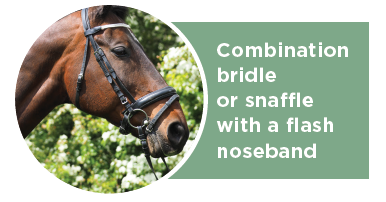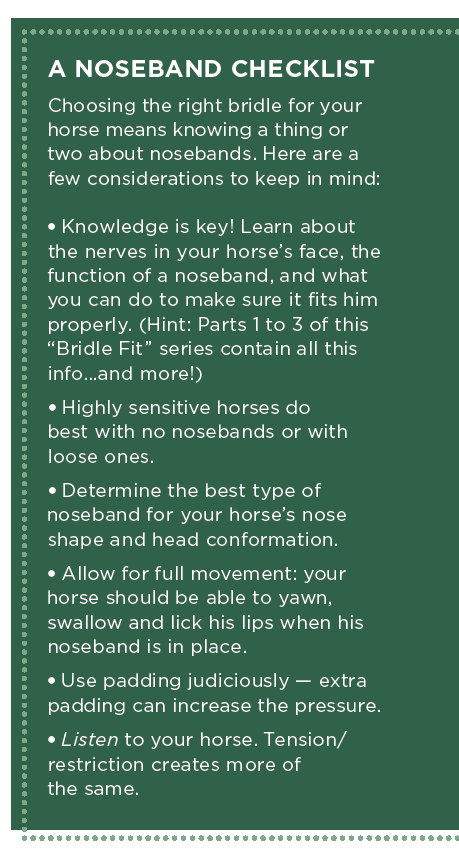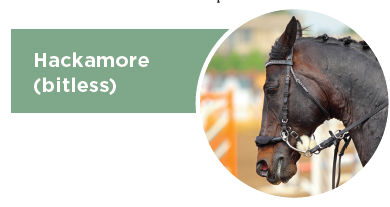Shopping for a bridle? Take a look at some of the different options available, and a few pros and cons of each.
When shopping for a bridle for your horse, you’ll find there are many different types to choose from. This article will cover various examples of some popular bridles and their features.
Combination bridle or snaffle with a flash noseband
- has an additional flash to keep mouth shut (and tongue in)
- noseband needs to be buckled high enough to avoid interfering with the bit

Swedish
- extra padding under the noseband buckle for more comfort
- very similar to the combination bridle, with extra flash
- need room to buckle noseband and flash properly
- good for smaller horses
- often buckled too tightly, given the false sense of “comfort” that comes from the extra padding

English bridle or snaffle bridle
- noseband should lie one to two fingers below the zygomatic arch
- popular for Thoroughbreds (for more freedom in the mouth)
- not a good option if your horse likes to put his tongue over the bit
- rolled noseband puts more pressure on the nose

Hanoverian or drop-noseband
 noseband lies about four fingers above the nostrils past the bit
noseband lies about four fingers above the nostrils past the bit- not a pretty-looking bridle
- relays pressure from the reins directly from the lower jaw onto the nose
- prevents the horse from putting his tongue over the bit
- less leather and buckles, lowering impact on sensitive nerves and acupuncture points
Mexican, Grackle or Figure 8
- loose snaffle rings
- easier for breathing
- crossing leather straps over the nose with a leather rosette in the center
- upper piece crosses the zygomatic arch, with pressure only in the center from the rosette piece
- only recently allowed for use in dressage rings
- if buckled too tightly, it pushes the bit up into the corners of the lips
Hackamore (bitless)
- uses lever action at the sides of the noseband to put pressure on the nose
- horse can become less responsive over time
- good for use if a horse has a mouth injury
- higher classes need additional aid from outside rein

Micklem
- extra strap attaches the bit to the bridle
- extremely comfortable, supports the “chewing” motion

When it comes to bridles, it’s definitely not “one size fits all”! It’s important to find the size, type and make of bridle that works for your horse, even if it means purchasing one that’s customized to be anatomically correct. This can help your horse perform better by relieving pressure on the sensitive areas of his head. A well-fitted, appropriately-padded ergonomically-designed bridle helps distribute pressure more evenly – good for the horse and the rider!







